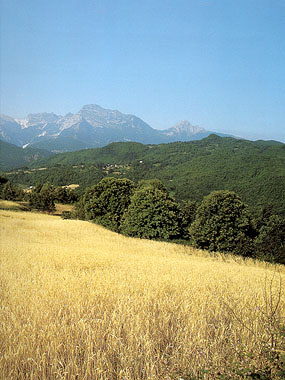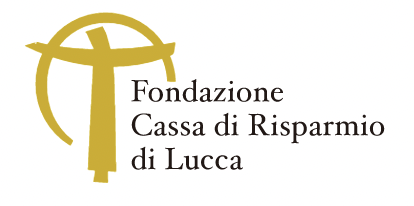
In the last decades of the IVth century B.C. Ligurian peoples settled the Po valley, probably spurred by the arrival of the Celts, moved south of the Apennine and occupied the mountainous areas of Lunigiana, Garfagnana and Versilia giving origin to the Apuan Ligurian culture. The archaeological finds in these areas all point to the formation of a consistent system of settlements with outlets towards the sea by the end of the IVth century B.C., that consolidated further in the course of the IIIrd century B.C.
According to ancient sources the confederation of the Apuan Ligurians was one of the most powerful among those settled on the Tuscan and Emilian Apennine (Casuentillani, Friniates, Ilvates); however the first express mention of them refers to the first decades of the IInd century B.C. when, during the second phase of the Roman-Ligurian wars (193-155 B.C.), the Apuans challenged for a long time the Roman armies.
Archaeological records permit, however, to sketch in more detail the events connected with the Ligurian population of the area prior to the direct confrontation with Rome. A great number of finds show that the IIIrd century B.C. was a period of relative stability for the Ligurian communities in Garfagnana and Versilia and that in this period intense commercial relations with nearby Pisa were established through the Etruscan villages along the Versilia coast and the lower Serchio valley.
The demand for raw materials such as timber or wool during the years of the First Punic War (264-241 B.C.), when Pisa had entered entirely within the orbit of Rome, stimulated commercial relations with the Etruscans and spread the use of wine among the Ligurians.
According to ancient sources the first direct confrontation between the Ligurians and Rome took place in the second half of the IIIrd century B.C. and probably involved also the Apuans; the desertion of the Etruscan villages of Ponte Gini di Orentano and Bora dei Frati in Versilia show, indeed, that relations deteriorated in this period.
The crisis became evident when, during the Second Punic War (218-201 B.C.), the Ligurians openly sided with Hannibal against the Romans and their Etruscan allies. Hence, at the end of the war, Rome concentrated her forces against the indomitable Ligurians who stood in the way of an expansion towards the North of Italy. Archaeological finds confirm that a situation of insecurity and instability marked the years of the conflict: in Versilia and Garfagnana the Ligurian settlements that had in the meantime become tiny and makeshift were placed in high secure positions, difficult to reach and generally protected by a mountaintop.
The war ended in 180 B.C. when, after a decisive defeat, the Apuans were deported en masse to the Sannio region. Only so the conditions for a full control of the territory by the Romans could be created, confirmed by the foundation of the colonies of Lucca (180 B.C.) and Luni (177 B.C.). (text by SUSANNA BIANCHINI – FABIO FABIANI)
Details:
Sheep-breeding was the main economic activity of the Apuan Ligurians: the frequentation of caves, shelters and bivouacs along the mountain ridges of the Apuans and Apennines proves the habit of seasonal transhumance.
Of course a series of traditionally related activities were connected with this: the production of milk and other dairy products, the spinning and weaving of wool attested by frequent findings of clay or stone spindles.
Since large woodland areas were available timber could be easily produced; this activity of woodcutting, mentioned in ancient sources, is attested by the finding of iron axes among the grave goods in men's tombs (Levigliani).
Crafts included both the production of fine clay tableware with typical red decorations and coarse impasto earthenware for household use and the forging of metal tools, arms and ornaments.
Commercial relations with the nearby Etruscan peoples were established rather early: the Ligurians exported timber as well as the produce of their sheep-breeding activity, while they imported valuable products such as wine and oil from the maritime circuit and others.
Through the north Italian and Adriatic commercial routes arrived also precious female ornaments made of amber or glass paste, widespread both in tombs (Castelvecchio Pascoli) and settlements (Monte Pisone).
Cremation was a characteristic of the Ligurian funeral: the ashes and charred remains of the dead, sometimes shrouded in a piece of cloth, were collected, together with the personal ornaments, in an urn, placed within in a case of stone slabs and buried (Vado; Castelvecchio Pascoli).
Men's tombs also contained a set of drinking vessels (bowl, cup, glass and, less frequently, jug) and a set of iron arms (spear, javelin, sword and helm) ritually bent and so made useless; the latter emphasise the prominent position of warriors in Ligurian society.
Characteristic of women's tombs, instead, is the presence of spindles, a clear reference to the spinning of wool, the main domestic activity of the women. The female apparel also included fibulae, belts, armillae, rings and necklaces.
The tomb was marked on the outside by an enclosure or a heap of stones with burials of several members belonging to the same family sometimes grouped together. At Ameglia, on the estuary of the river Magra towards La Spezia (end of IVth – beginning of IIIrd century B.C.) as well as at Levigliani in the Apuans (second half of the IIIrd century B.C.), the graveyards present several enclosures or tumuli within a well defined planimetric scheme reflecting the family structure of the local society. In the small necropolis of Villa Collemandina (Colle delle Carbonaie) in Upper Garfagnana (end of IVth century B.C.) the arrangement of the tombs clearly reflects the hierarchy of the family structure with the tomb of the head of the family at the centre and those of the remaining members grouped around it.
After the Roman conquest, the few Ligurian communities that escaped deportation and were integrated in the new political order, maintain the traditions reflected in their funeral rites: the small necropolis of Marlia near Lucca, dating back to the middle of the IInd century B.C. and the Cappella tomb in Versilia belonging to the first half of the Ist century B.C., attest the persistence of elements of Ligurian culture in a context of progressive romanisation.
The Ligurian villages of Garfagnana are usually placed along a strip of land skirting the mountains and overlooking the valley floor (Monte Pisone; Colle delle Carbonaie), while in Versilia they occupy hills protected at the back by the massif of the Apuan Alps and dominating the deep narrow river valleys (Levigliani).
Environmental constraints sometimes imposed, before a settlement could be established, to carry out a series of hard terracing works with levellings of the ground and embankments. The size of the settlements varies from a few dwellings to larger more elaborate nuclei.
The dwellings were largely made of perishable materials such as wood, branches and animal skins; in some cases partly hewn stone was employed for the base of the walls. The single dwellings were usually composed of one or two rooms, always had a hearth and sometimes shoulders or other utilities.
The settlements dating to the period of open conflict with Rome, proper settlements (Monte Capriola; Monte Lieto) or simply lookouts to keep the region under control (Monte Altissimo), are perched in naturally fortified, inaccessible positions and present minimal structures with, sometimes, only a hearth to identify them.
The makeshift character of these settlements, easy to build up again in a short time, allowed the greatest mobility on the territory, necessary for the guerrilla actions in which the Ligurians were masters.





